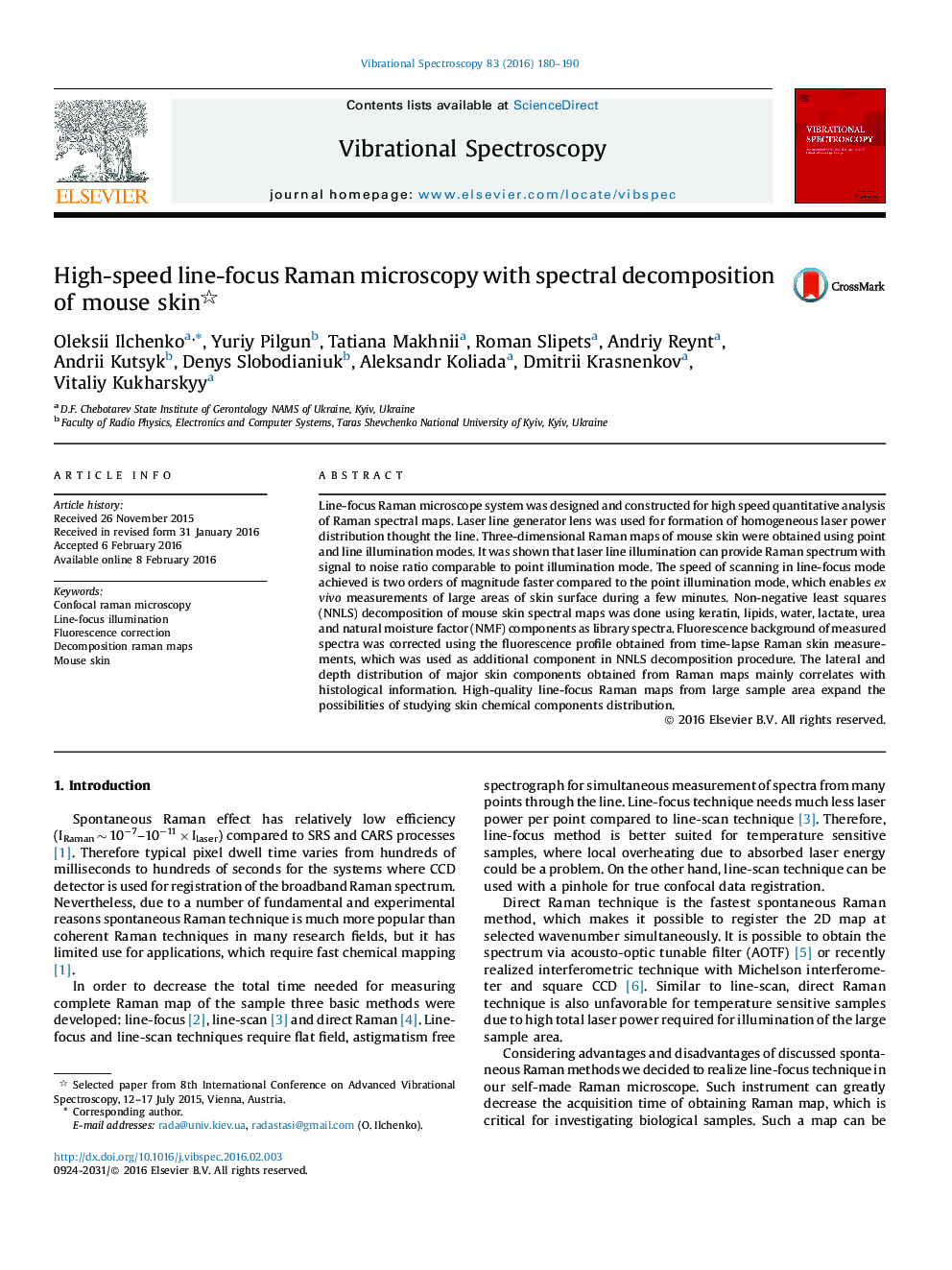| Article ID | Journal | Published Year | Pages | File Type |
|---|---|---|---|---|
| 1251718 | Vibrational Spectroscopy | 2016 | 11 Pages |
Line-focus Raman microscope system was designed and constructed for high speed quantitative analysis of Raman spectral maps. Laser line generator lens was used for formation of homogeneous laser power distribution thought the line. Three-dimensional Raman maps of mouse skin were obtained using point and line illumination modes. It was shown that laser line illumination can provide Raman spectrum with signal to noise ratio comparable to point illumination mode. The speed of scanning in line-focus mode achieved is two orders of magnitude faster compared to the point illumination mode, which enables ex vivo measurements of large areas of skin surface during a few minutes. Non-negative least squares (NNLS) decomposition of mouse skin spectral maps was done using keratin, lipids, water, lactate, urea and natural moisture factor (NMF) components as library spectra. Fluorescence background of measured spectra was corrected using the fluorescence profile obtained from time-lapse Raman skin measurements, which was used as additional component in NNLS decomposition procedure. The lateral and depth distribution of major skin components obtained from Raman maps mainly correlates with histological information. High-quality line-focus Raman maps from large sample area expand the possibilities of studying skin chemical components distribution.
